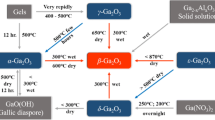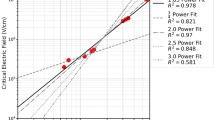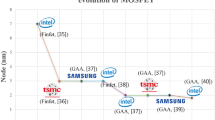Abstract
In order to better shield the substrate-assisted depletion (SAD) effect and improve the breakdown voltage of super-junction (SJ) devices, an SJ lateral double-diffusion metal oxide semiconductor device with a gradient charge compensation layer (gradient device) is proposed. The main feature of this structure is to introduce a gradient charge compensation layer between the SJ layer of a conventional device and the substrate. The depth of the gradient charge compensation layer increases gradually from the source to the drain. The charge distribution in the drift region is optimized by reducing the compensation charge on the side near the source and increasing the compensation charge on the side near the drain. Introduction of the layer improves shielding of the SAD effect, and the electric field on the surface of the structure is an approximately rectangular distribution, thus the breakdown voltage is improved. The simulation results show that the gradient device has 409-V breakdown voltage and a 9.5-MW cm−2 figure of merit with a drift region length of 21 μm. Compared with the conventional SJ structure (conventional device) with the same drift length, the breakdown voltage and figure of merit of the gradient device are increased by 57.3% and 137.5%, respectively.
Similar content being viewed by others
References
Y. B and C. X, IEEE Trans. Power Electron. 32, 551 (2016).
X. Luo, M. Lv, C. Yin, J. Wei, K. Zhou, Z. Zhao, T. Sun, B. Zhang, and Z. Li, IEEE Trans. Electron Devices 63, 3804 (2016).
H. C, IEEE Trans. Electron Devices. 26, 243 (1979).
S. G. Nassif-Khalil and C. A. T. Salama, in Proceeding ISPSD (2002), pp. 81–84.
S. Honarkhah, S. Nassif-Khalil, and C. A. T. Salama, in ESSDERC (2004), pp. 117–120.
S.G. Nassif-Khalil and C.A.T. Salama, IEEE Trans. Electron Devices 50, 1385 (2003).
B. Zhang, W. Wang, W. Chen, and Z. Li, IEEE Electron Device Lett. 30, 849 (2009).
L.J. Wu, H. Yang, Y.Q. Wu, B. Lei, N. Yuan, Y. Song, L.M. Hu, and Y.Y. Zhang, Superlattices Microstruct. 116, 262 (2018).
B. Duan, S. Yuan, Z. Cao, and Y. Yang, IEEE Electron Device Lett. 35, 1115 (2014).
W. Chen, B. Zhang, and Z. Li, Electron. Lett. 42, 1314 (2006).
B. Duan, Z. Cao, X. Yuan, S. Yuan, and Y. Yang, IEEE Electron Device Lett. 36, 47 (2015).
W. Chen, B. Zhang, and Z. Li, Semicond. Sci. Technol. 22, 464 (2007).
B. Duan, Z. Cao, S. Yuan, and Y. Yang, IEEE Electron Device Lett. 36, 1348 (2015).
J. Cheng, B. Zhang, B. Duan, and Z. Li, Chin. Phys. Lett. 25, 262 (2008).
B.X. Duan, Y.T. Yang, and B. Zhang, IEEE Electron Device Lett. 30, 305 (2009).
L.J. Wu, H. Yang, Y.Y. Zhang, Y. Song, N. Yuan, B. Lei, and Y.Q. Wu, J. Electron. Mater. 47, 6929 (2018).
L. Liang, H. Huang, and X. Chen, in IEEE International Conference on Electron Devices & Solid-state Circuits (2016), pp. 120–123.
Y. Wang, H.F. Hu, and W.L. Jiao, IEEE Electron Device Lett. 31, 1281 (2010).
W. Ying, Y.F. Wang, Y.J. Liu, and Y. Wang, Superlattices Microstruct. 102, 399 (2017).
J. Cheng, P. Li, W. Chen, B. Yi, and X.B. Chen, IEEE J. Electron Devices Soc. 6, 1091 (2018).
Author information
Authors and Affiliations
Corresponding author
Additional information
Publisher's Note
Springer Nature remains neutral with regard to jurisdictional claims in published maps and institutional affiliations.
Rights and permissions
About this article
Cite this article
Wu, L., Ding, Q., Chen, J. et al. A Lateral Double-Diffusion Metal Oxide Semiconductor Device with a Gradient Charge Compensation Layer. J. Electron. Mater. 48, 7970–7976 (2019). https://doi.org/10.1007/s11664-019-07579-8
Received:
Accepted:
Published:
Issue Date:
DOI: https://doi.org/10.1007/s11664-019-07579-8




